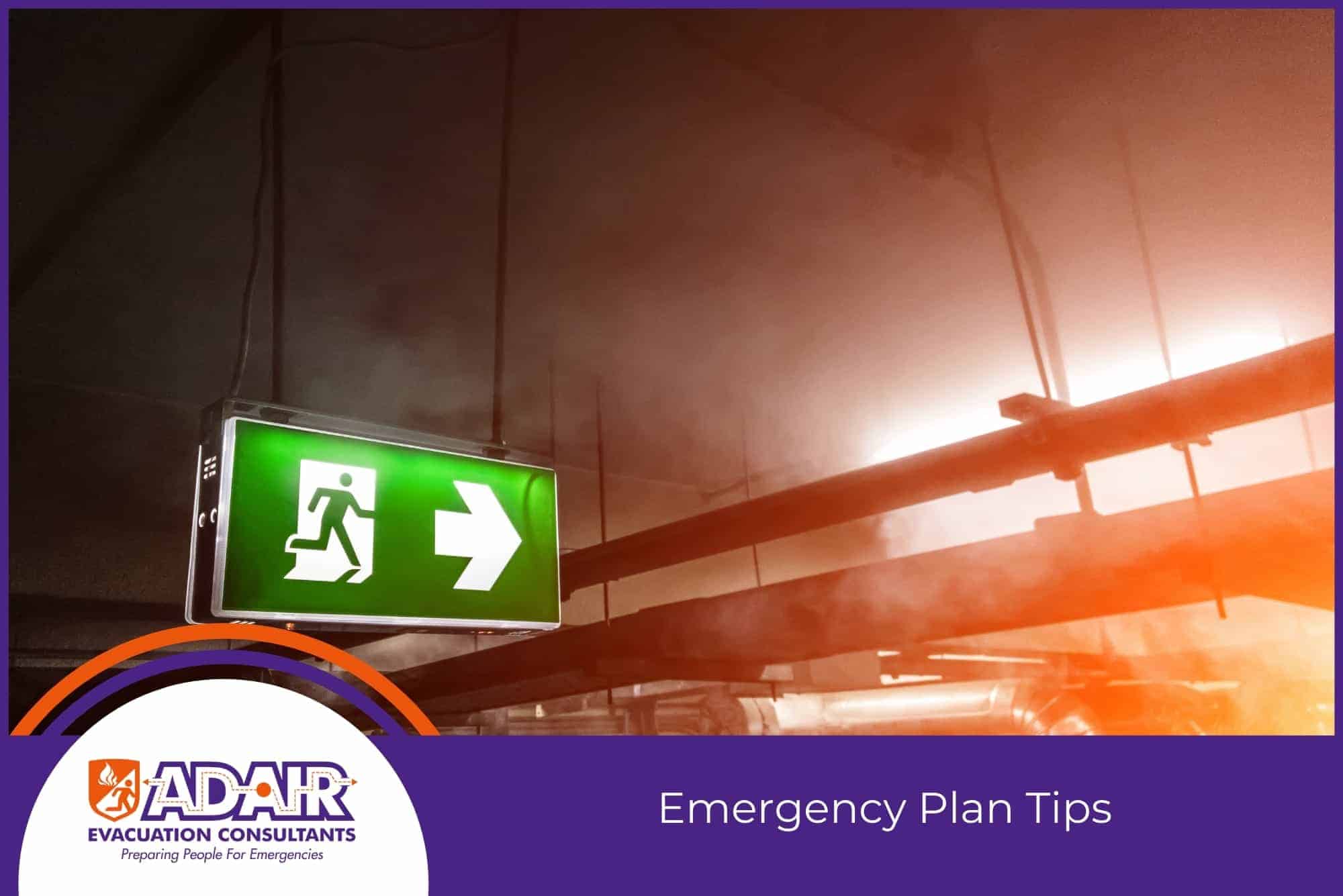Ensuring safe and effective evacuation in the workplace
Preparing for emergencies is part of effective management and employers have the responsibility of ensuring that there is an established evacuation plan in case of emergencies.
The efficiency of an evacuation plan can help save many lives, but a disorganised evacuation procedure can cause confusion and panic, which can result in injuries and even death. This is why every business and commercial establishment must have a written evacuation plan that covers any possible type of emergency that may occur.
What is included in an Emergency Evacuation Plan?
An emergency evacuation plan is a set of instructions that employees, tenants, and everyone on the premises must follow during an emergency. Emergency evacuation plans can be created by an experienced member of the company or they can be created by an Evacuation Consultant, such as Adair Evacuation Consultants. They contain, but are not limited, to the following items:
- Responses to different types of emergencies
- Evacuation procedures
- Procedure in notifying emergency service organisations
- Application of necessary medical assistance and treatment
- Communication between authorised emergency personnel of the emergency response team to everyone concerned
- Regular testing of evacuation procedures
- Information and relevant training to workers who are in charge of the implementation of emergency procedures.

Emergency Plan tips
If you are involved in the emergency response and evacuation planning in your company, here are some tips that can help you create an effective plan:
1. Consider the types of emergencies to be covered
The types of emergencies that you should consider will mostly depend on the hazards associated with your business and the work activities that occur in the workplace, including fire, medical emergencies, hazardous chemical accidents, bomb threats, and natural disasters, among many others.
Aside from the possible cause of emergencies, you should also consider the consequences that may occur because of the emergency. External hazards, especially those located nearby, must also be taken into consideration. For instance, a fire can result in an even more catastrophic incident if there is a gas station nearby.
2. Follow local, State and Federal Law
Make sure that your emergency evacuation plan does not go against state or local laws. Here are some Acts and Regulations that may be relevant to your emergency evacuation planning.
- Occupational Health and Safety Act 2004
- Compliance Code
- The Dangerous Goods Act and Regulations
- The National Construction Code of Australia
- Hazardous Substances in the OHS Regulations
- AS 3745 Planning for Emergencies in Facilities
- AS MP 24 Use of Lifts in Emergencies
3. Work on the details
Here are some details about the workplace that are relevant to planning your emergency evacuation procedures (Depending on the nature of the workplace, there may be even more factors that you should consider):
- The nature of the hazards that are present in the workplace
- The nature of the work activities being done in the workplace
- The size of the workplace
- The location of the workplace and its proximity to essential health services
- The number of workers, including its composition, such as full-time employees, contractors, and site visitors
You should also include specific details in your emergency evacuation plan that will be helpful for the workers such as:
- Emergency contact numbers of key personnel who are part of the emergency response team
- Contact details of nearby local emergency services, including the police department and the fire brigade
- List of tools that will be used to alert people during an emergency, such as bell alarms and sirens
- Evacuation routes and where to evacuate during specific emergencies
- Procedures in assisting seniors and people with disability
- A map that identifies the location of protection equipment, exits, and assembly areas
- Post-incident procedures, such as personnel accounting and seeking medical attention if needed.
4. Know when and who to evacuate
Not all emergencies will warrant an evacuation. Your emergency evacuation plan should include different situations that will require you to evacuate the premises. Whether you should evacuate some or all of the workers, the extent of the evacuation will depend on each emergency and its gravity.
However, in major emergencies, such as earthquakes or explosions due to hazardous materials, evacuation of the whole facility should be immediate.
5. Create an Evacuation Dissemination Plan
No matter how detailed your emergency evacuation plan is, it will be of little help during emergencies if no one knows about it. Creating a way to make sure everyone knows about the evacuation plan is called ‘a dissemination plan’. Whether it will be via training or seminars, letting everyone know what they should do during emergencies can save lives.
Training activities can include evacuation simulations where the workers will identify the assembly points and emergency exits, or for workers operating machinery and equipment, training must also include how they can safely shut them down during an evacuation.
Every new hire should receive training, and existing employees should take refresher courses. Contractors who work for short-term projects must also be considered for training and instruction.
Workers assigned to specific roles and tasks as part of the emergency response team must receive specialised training and instructions. They will need to be able to use their wits and their skills during emergencies. The list of the necessary trainings must be included in the emergency evacuation planning.
6. Protect your people with the right gear
Depending on the emergency, your workers may need Personal Protective Equipment (PPE) to protect themselves during the evacuation. Assess the hazards present in the workplace and prepare the necessary PPE to protect everyone during an emergency evacuation.
Here are some common PPE items that you may need to include in your emergency evacuation pack:
- Safety goggles and glasses
- Hard hats
- Safety shoes
- Respirators
- Face masks
- Chemical suits

Let Adair Evacuation Consultants help you plan for any emergency
At Adair Evacuation Consultants, we know the importance of every person in your company. Human life is priceless and, as a responsible business operator, it is your duty to ensure that they have a safe working space.
However, emergencies can still happen and the best thing to do is to ensure that an emergency response and evacuation procedure is in place to keep your workers safe.
At Adair, we will not just help you comply with state laws and regulations, we will help you keep your moral obligations of protecting the people under your wing. Visit us at https://www.adairevac.com.au, send a message here, or call us today on +1300 213 000 and let our specialists help you.


